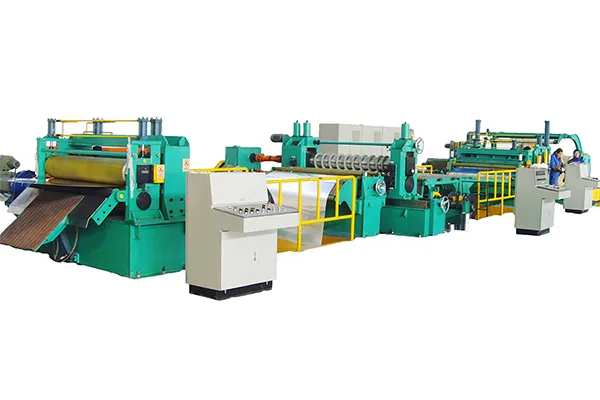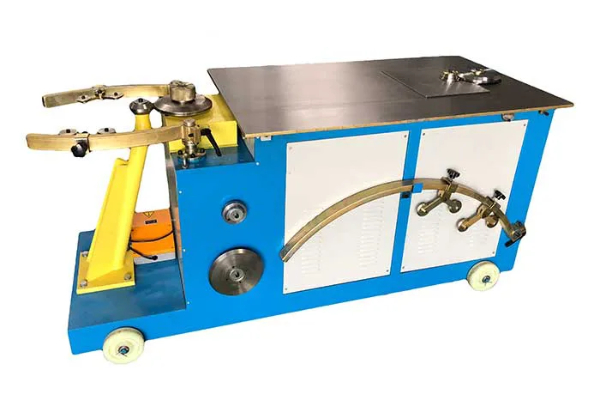
The Ultimate Guide to Rectangular Duct Machines
- By:Metmac
- 2024-08-23
- 140
The Ultimate Guide to Rectangular Duct Machines: Unveiling the Cornerstone of HVAC Systems
The Ultimate Guide to Rectangular Duct Machines stands as an invaluable resource for HVAC professionals, contractors, and engineers alike. This comprehensive guide provides an in-depth exploration of the design, fabrication, and installation of rectangular ductwork, equipping readers with the knowledge and expertise to navigate the complexities of this critical component of HVAC systems.
Understanding Rectangular Ductwork:
Rectangular ductwork constitutes the backbone of air distribution systems, transporting conditioned air throughout commercial and residential buildings. Composed of galvanized steel or other durable materials, rectangular ducts offer several advantages, including:
– Efficient airflow: Rectangular shapes minimize friction and maximize air velocity, ensuring optimal air delivery.
– Space optimization: Rectangular ducts can be customized to fit specific spaces, allowing for efficient use of available ceiling and wall areas.
– Structural integrity: The rectangular shape provides inherent structural strength, reducing the risk of deformation under pressure.
Fabrication Techniques:
The fabrication of rectangular ductwork involves precise processes that demand specialized machinery. The Ultimate Guide covers various fabrication techniques, including:
Joining Methods:
– Pittsburgh lock: A strong and airtight seam formed by folding and interlocking two duct edges.
– Slip and drive: A simple and quick method involving overlapping one duct edge over another and securing it with rivets or screws.
– Snap lock: A fast and inexpensive technique that utilizes pre-formed flanges on duct edges that lock together.
Seam Types:
– Single seam: A single fold and lock on one duct edge, providing a basic level of sealing.
– Double seam: Two folds and locks on one duct edge, enhancing strength and airtightness.
– Pittsburgh double seam: A highly durable and leak-proof seam formed by double folds and locks on both duct edges.
Equipment Considerations:
The fabrication process relies heavily on specialized machinery. The Ultimate Guide provides detailed overviews of essential equipment:
Rectangular Duct Machines:
– Entry flangers: Form the entry flanges of duct sections, ensuring proper connections.
– Angle iron notchers: Cut notches in angle iron frames for duct assembly.
– Double notchers: Create notches in both sides of duct flanges simultaneously, boosting efficiency.
– Seaming machines: Interlock and seal duct edges using various seam types.
Installation Practices:
Proper installation is crucial for optimal duct performance. The Ultimate Guide covers best practices for:
Supporting and Hanging Ductwork:
– Support systems: Selecting and installing support systems that prevent ductwork from sagging or vibrating.
– Hanging methods: Employing specialized hanging devices to securely suspend ductwork from ceilings or walls.
Sealing Connections:
– Sealant applications: Applying appropriate sealants to airtightly connect duct sections and prevent air leakage.
– Testing and troubleshooting: Implementing rigorous testing procedures to identify and resolve any potential air leaks or performance issues.
Conclusion:
The Ultimate Guide to Rectangular Duct Machines empowers HVAC professionals with the knowledge and tools to design, fabricate, and install high-quality rectangular ductwork. By mastering the techniques and best practices outlined in this comprehensive resource, readers can ensure the efficient and reliable operation of their HVAC systems for years to come.
-
Iron Sheet Laser Cutting Machine: Unmatched Precision for Demanding Fabrication with METMAC
2026/01/06 -
Precision Metal Cutting Machine: The Engine of Modern Manufacturing, Powered by METMAC
2026/01/06 -
Sheet Metal CNC Laser Cutting Machine: Precision Redefined with METMAC Technology
2026/01/06 -
Sheet Metal Press Brake for Sale: Find Your Precision Bending Solution with METMAC
2026/01/06
-
Advanced Sheet Metal Rolling, Laser Cutting, and Folding Machines for Precision Fabrication
2025/10/31 -
High-Performance Sheet Metal Bending and Cutting Machines for Modern Fabrication
2025/10/31 -
High-Quality Sheet Metal Equipment for Sale: Efficient Solutions for Modern Manufacturing
2025/10/31 -
High-Performance Sheet Metal Equipment for Sale: Forming and Shearing Solutions for Modern Fabrication
2025/10/22
-
Understanding the Role and Function of Steel Strip Slitting Machines
2024/05/11 -
Maintenance Tips for Longevity of HVAC Duct Machines
2024/05/11 -
Innovations in Steel Strip Slitting Machine Design and Technology
2024/05/11 -
Improving Accuracy in Metal Fabrication with Laser Metal Shear Machines
2024/05/11
-
A Guide to the Latest Innovations in Sheet Metal Folding Machines
2024/11/29 -
Key Features to Consider When Investing in a Sheet Metal Folding Machine
2024/11/28 -
Enhancing Precision with Advanced Sheet Metal Folding Machines
2024/11/27 -
How to Choose the Right Sheet Metal Folding Machine for Your Workshop
2024/11/26







